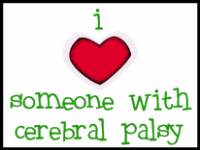
Welcome to Friday Facts! here on the Knowledge Safari blog. Each week we aim to shine the spotlight on a various segment of special needs in order to raise awareness and provide information. For the past several weeks, we have been focusing on childhood safety issues which are important for all families.
This is the last post in this series and we will resume our regular Friday Facts! posts next week. If you are aware of a special need that could use some awareness, please let us know in the comments!
Today we focus on Home Safety.
The following is taken from the Children's Safety Network:
Definition: Unintentional injuries that occur in and around the home can include burns, falls, drowning, poisonings (including from lead, carbon monoxide, household cleaners, and prescription medications), animal bites, and choking/suffocation.
Magnitude of the Problem:
Close to 20,000 deaths and 21 million medical visits on average each year are the result of injuries that happen in the home, according to the Home Safety Council.
Close to 20,000 deaths and 21 million medical visits on average each year are the result of injuries that happen in the home, according to the Home Safety Council.
According to the CDC:
4 out of 5 fire deaths in happened in peoples' homes.
Younger children are more at risk for scalding burns resulting from hot liquids or steam while older children have more injuries due to direct flame burns.
374 children ages 0 to 19 are treated in an emergency department and two children die as a result of being poisoned each day in the U.S., according to the CDC.
4 out of 5 fire deaths in happened in peoples' homes.
Younger children are more at risk for scalding burns resulting from hot liquids or steam while older children have more injuries due to direct flame burns.
374 children ages 0 to 19 are treated in an emergency department and two children die as a result of being poisoned each day in the U.S., according to the CDC.
Prevention: Home injuries are preventable. Raising awareness among parents and caregivers of the risks of injuries to children in the home, and the importance of implementing safety measures, is the first step in preventing home injuries to children. Home safety checklists are useful tools for parents to assess the risk of injury in their homes. Smoke alarm and carbon monoxide alarm give-away programs in at-risk communities are also useful tools to protect public health. Ensuring playground equipment is safe and properly maintained and has a soft landing surface can help prevent fall injuries in children. Strong State child care licensing regulations can help keep children safe in at-home child care settings.More information is available under the following injury topic pages: Asphyxia; Fire & Burn Safety; Playground Safety; Poison Prevention; Water Safety
Useful Publications
Babies Sleep Safest on Their Backs: A Resource Kit for Reducing SIDS in African American Communities
Caring for Our Children:National Health and Safety Performance Standards:Guidelines for Out-of-Home Child Care, 2nd Edition
Safe Sleep for Your Baby: What does a safe sleep environment look like?
U.S. Consumer Product Safety Commission - Drowning Prevention Publications
U.S. Consumer Product Safety Commission - Household Safety Publications
U.S. Consumer Product Safety Commission - Playground Safety Publications
U.S. Consumer Product Safety Commission - Poison Prevention Publications
Babies Sleep Safest on Their Backs: A Resource Kit for Reducing SIDS in African American Communities
Caring for Our Children:National Health and Safety Performance Standards:Guidelines for Out-of-Home Child Care, 2nd Edition
Safe Sleep for Your Baby: What does a safe sleep environment look like?
U.S. Consumer Product Safety Commission - Drowning Prevention Publications
U.S. Consumer Product Safety Commission - Household Safety Publications
U.S. Consumer Product Safety Commission - Playground Safety Publications
U.S. Consumer Product Safety Commission - Poison Prevention Publications
CSN Webinar(s)
“Safe and healthy homes: what can be done?”
Protecting Families at Home: Best Practices, New Products and Resources
“Safe and healthy homes: what can be done?”
Protecting Families at Home: Best Practices, New Products and Resources































No comments:
Post a Comment